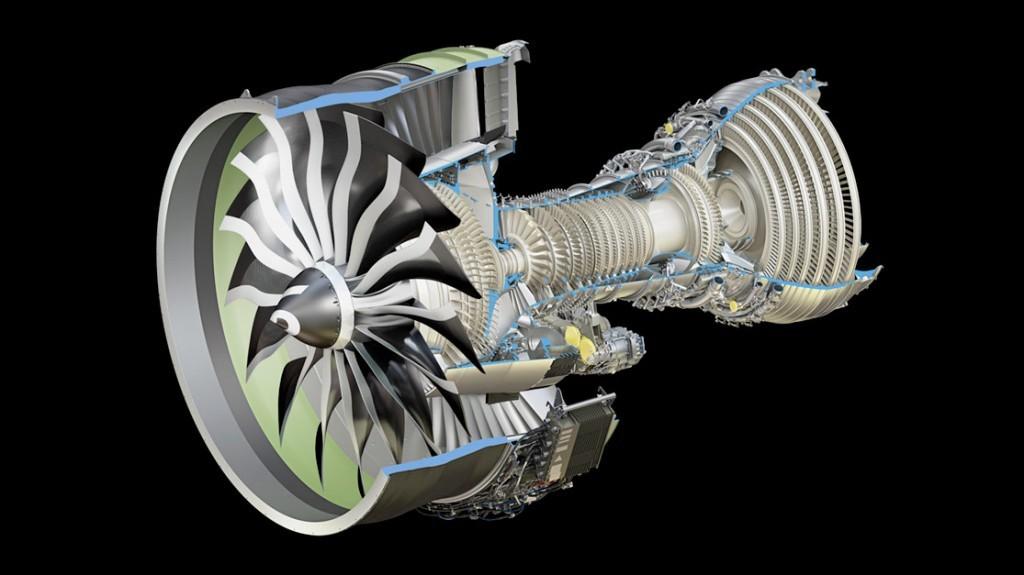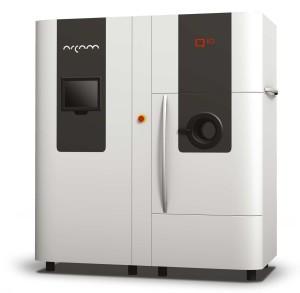 The benefits of metal 3D printing may not be immediately noticeable, as there is a higher initial investment than traditional part manufacturing, and more elaborate post processing requirements. Technology like that from Arcam with their Electron Beam Melting process uses familiar powder bed technology where a thin layer of metal powder is laid down on a printing bed and layer by layer that powder is melted together with a powerful electron beam to produce fully dense metal parts. The process may be more trouble in the beginning, however the benefits of powder bed printing mean that components with complex geometries can be manufactured as a single part as opposed to traditional fabrication methods that require the manufacturing of multiple parts that would then need to be joined.
The benefits of metal 3D printing may not be immediately noticeable, as there is a higher initial investment than traditional part manufacturing, and more elaborate post processing requirements. Technology like that from Arcam with their Electron Beam Melting process uses familiar powder bed technology where a thin layer of metal powder is laid down on a printing bed and layer by layer that powder is melted together with a powerful electron beam to produce fully dense metal parts. The process may be more trouble in the beginning, however the benefits of powder bed printing mean that components with complex geometries can be manufactured as a single part as opposed to traditional fabrication methods that require the manufacturing of multiple parts that would then need to be joined.
The end result in a stronger part, faster production time and ultimately money saved by only requiring a single part to be manufactured. While a handful of aerospace and automobile companies have been dabbling in metal 3D printing, it is still a bit of a rarity, and the process tends to be reserved for custom medical implants and other one off parts. Swedish metal 3D printer manufacturer Arcam is already dominating the medical implant business with their EBM technology, but now they’re expecting to get a huge boost from the aerospace industry.
While the medical implant market is a large one, it is a drop in the bucket compared to the aerospace industry. And as their industry grows, aerospace companies are both eager and desperate to produce higher quality parts for less money, and as a whole they are starting to take a serious look at metal 3D printing. In fact, as more and more airplane manufacturers start switching over to 3D printed metal parts, Arcam is worried about keeping up with the demand. At least according to their chief executive officer Magnus Rene.
“Two or three years ago, the question was whether the aerospace industry would start producing in this way. Now it’s just a question of when. The aerospace industry is some 50 to 100 times larger than the implants industry. Many components are unlikely to be made in 3D printers because they’re too large, but it’s still at least 10 times the size,” Rene told the Taipei Times.
Arcam already has several aerospace customers like General Electric, Pratt & Whitney and Rolls Royce Holdings, but they’re expecting some massive increases in demand within the next few years. GE Aviation alone has said that they are expecting to be using more than 100,000 metal 3D printed parts for their jet engines by 2020. And they are expecting to be producing lightweight turbine blades as early as 2018.
With the global 3D printing market expected to exceed $5 billion this year, and explode to over $20 billion by 2020, manufacturing is going to account for a significant portion of that. A majority of 3D printing services are currently used for prototyping, but the aerospace and automobile markets are expected to rapidly shift to live production of commercial ready parts. That sudden shift is almost entirely due to the efforts of GE, which was one of the earliest adopters of 3D printing, and their publicly stated goals of incorporating metal 3D printing into their production lines. Their commitment to metal 3D printing, and their early successes, is encouraging competitors in the industry to try to keep up with them.
According to Magnus Rene, a lot of those competitors are turning to Arcam’s EMB printers. In the past year Arcam has delivered close to 50 metal 3D printing systems, and they are expecting that to double in the next few years. They have already taken steps to keep up with the demand by doubling the production capacity for the Arcam plant in Molndal, Sweden. Rene still isn’t sure that’s enough, but hopes to have their yearly production capacity up to 150 systems. Mainly by hiring and training more assemblers, electricians and service engineers.
Discuss this story in the Arcam forum thread on 3DPB.com.
Subscribe to Our Email Newsletter
Stay up-to-date on all the latest news from the 3D printing industry and receive information and offers from third party vendors.
You May Also Like
3D Printing News Briefs, April 13, 2024: Robotics, Orthotics, & Hypersonics
In 3D Printing News Briefs today, we’re focusing first on robotics, as Carnegie Mellon University’s new Robotics Innovation Center will house several community outreach programs, and Ugogo3D is now working...
Rail Giant Alstom Saves $15M with 3D Printing Automation Software 3D Spark
3D Spark has entered into a three-year deal with the rail giant Alstom. Alstom, a transport behemoth with annual revenues of $16 billion, specializes in the manufacture of trains, trams,...
Meltio Expands Global Reach with New Partnerships in the Americas and Europe
Spanish 3D printing manufacturer Meltio has expanded its sales network across the globe. With the addition of three new partners in the United States, Brazil, Argentina, and Italy, Meltio aims...
3D Printing Webinar and Event Roundup: April 7, 2024
Webinars and events in the 3D printing industry are picking back up this week! Sea-Air-Space is coming to Maryland, and SAE International is sponsoring a 3D Systems webinar about 3D...
































